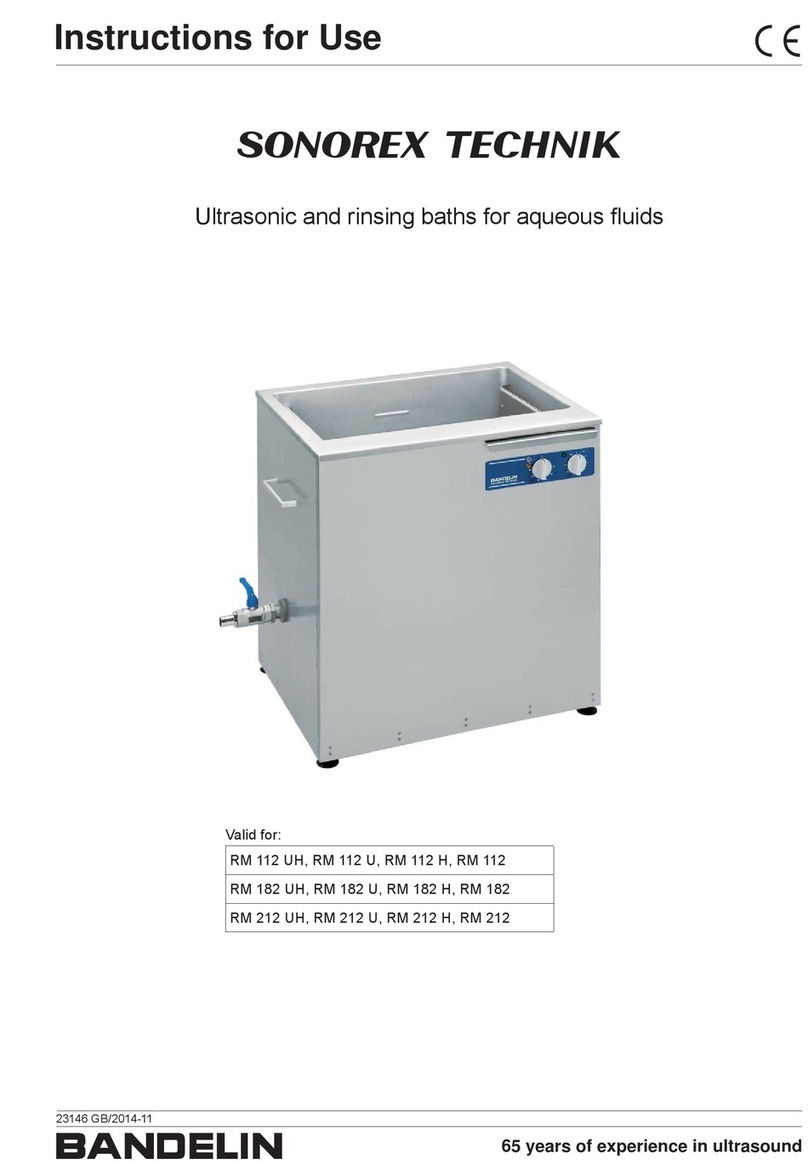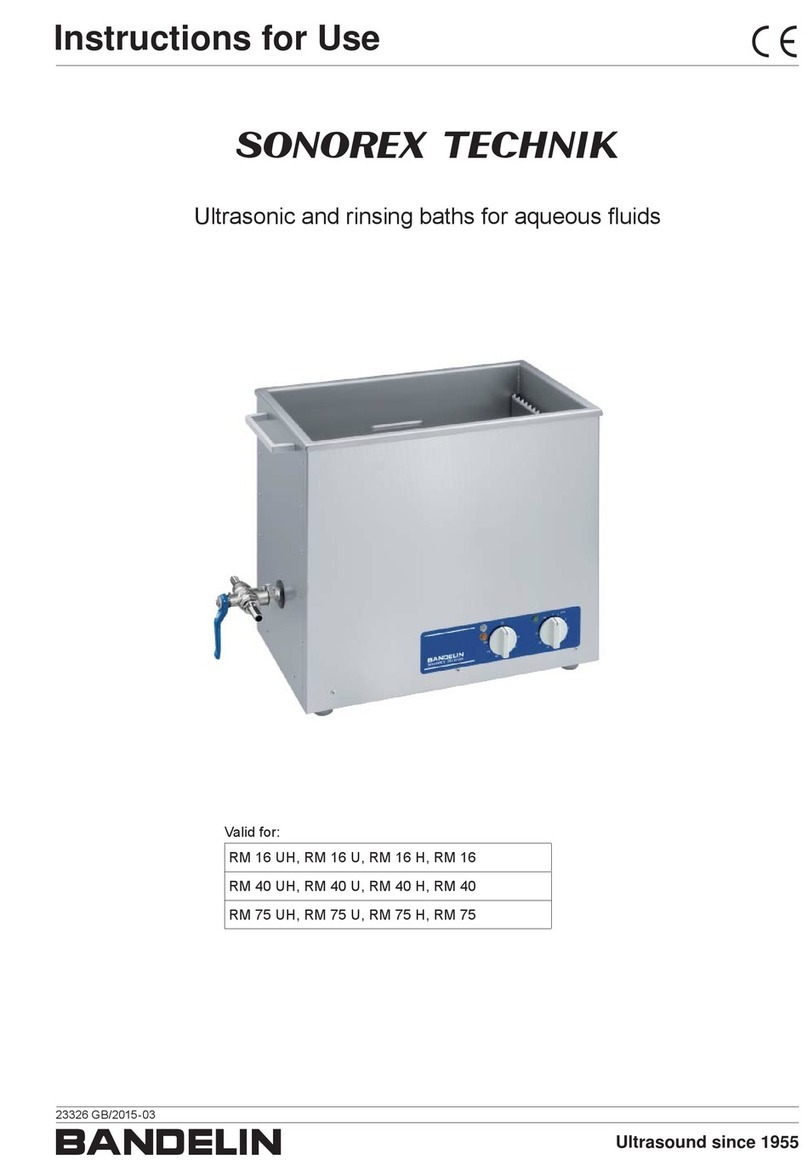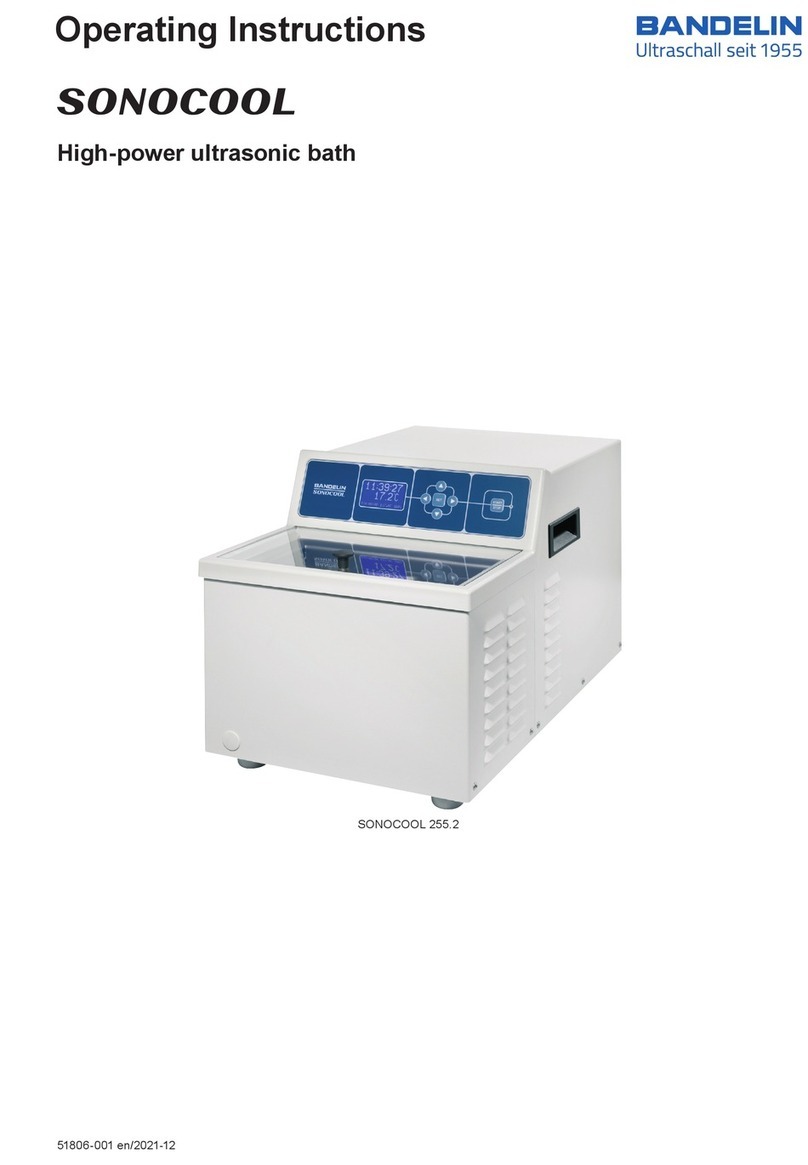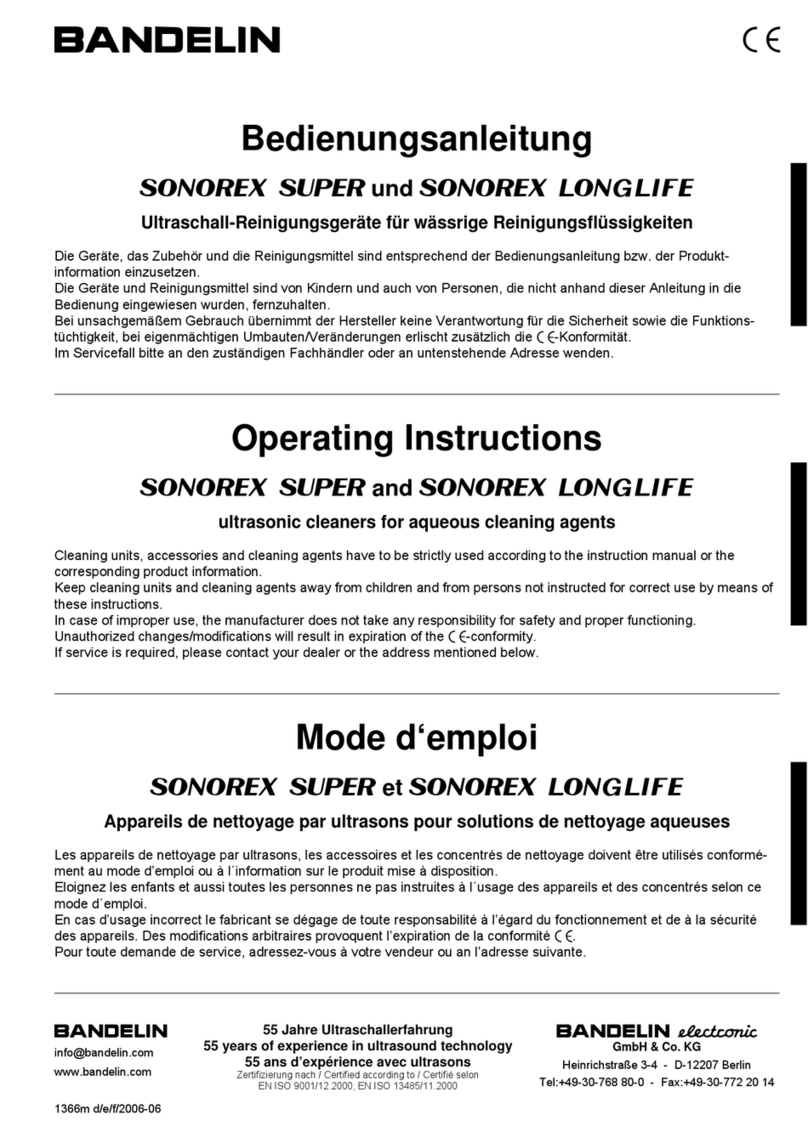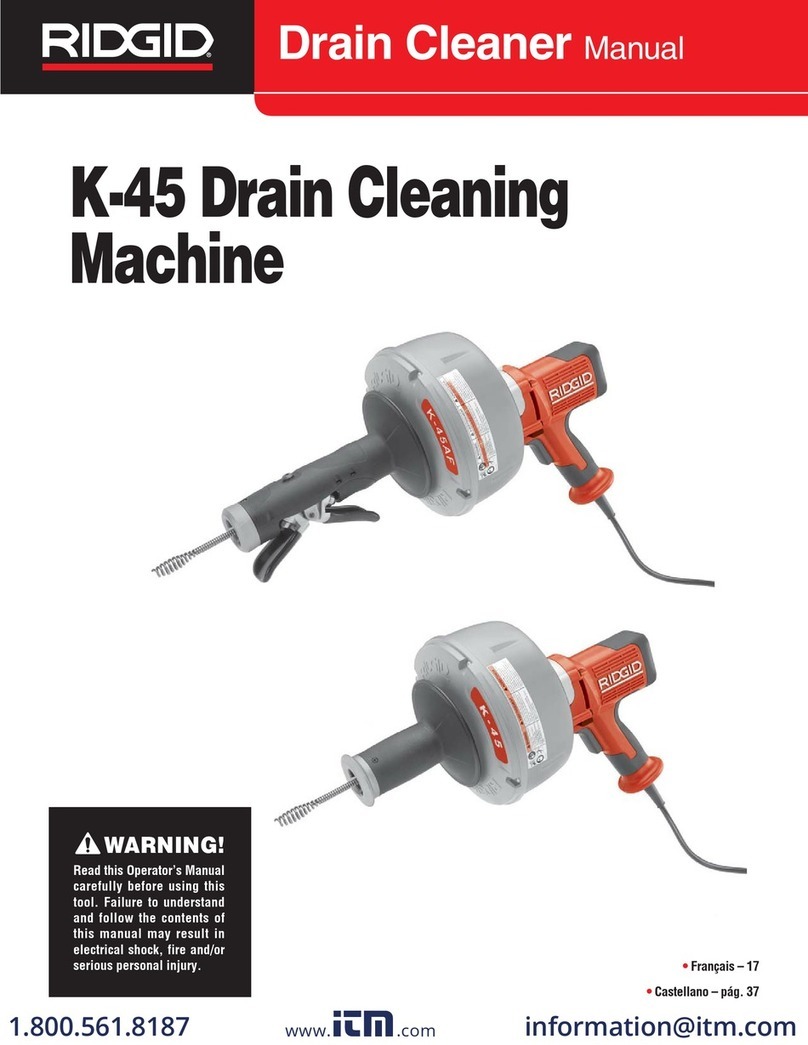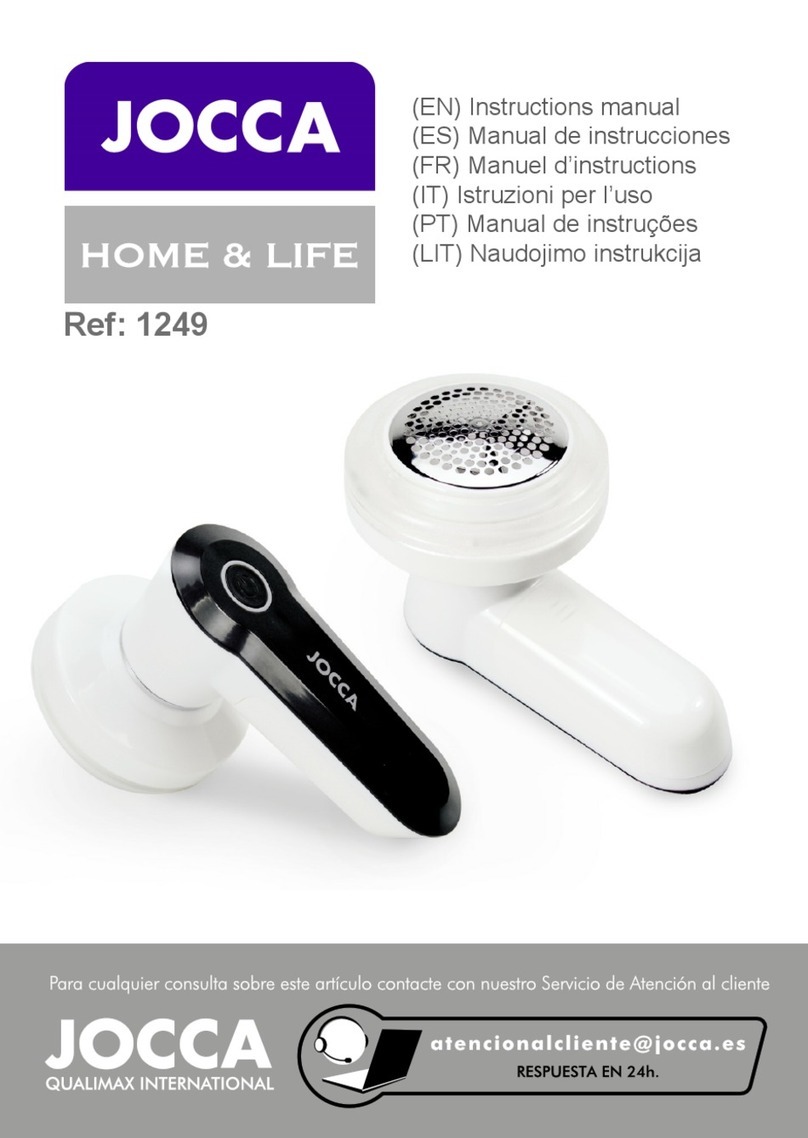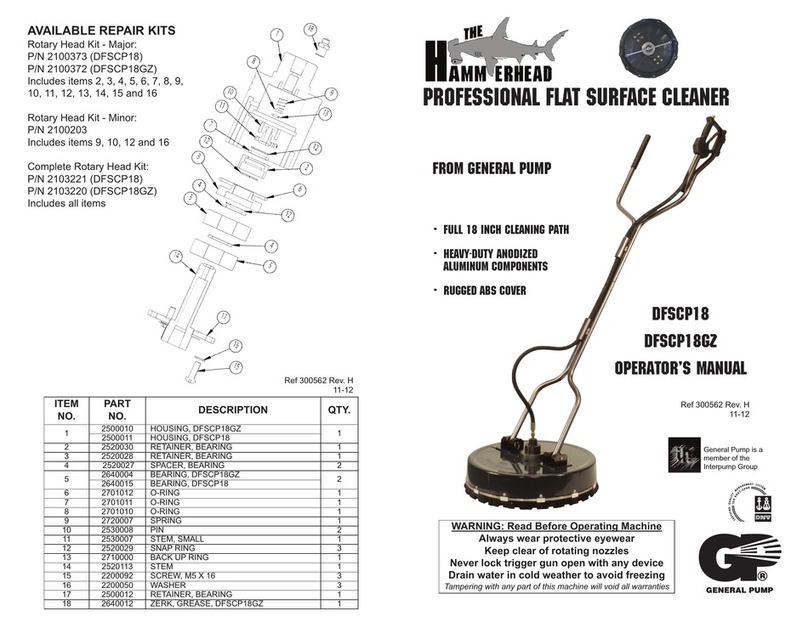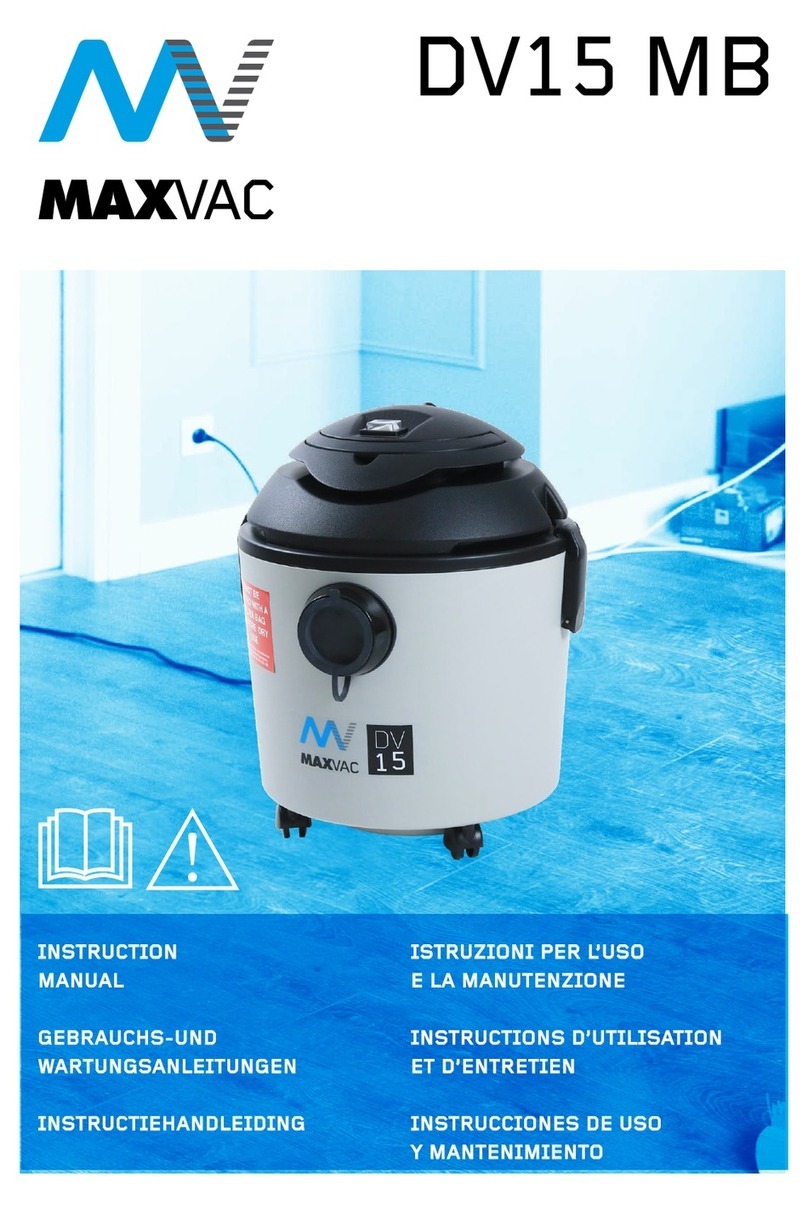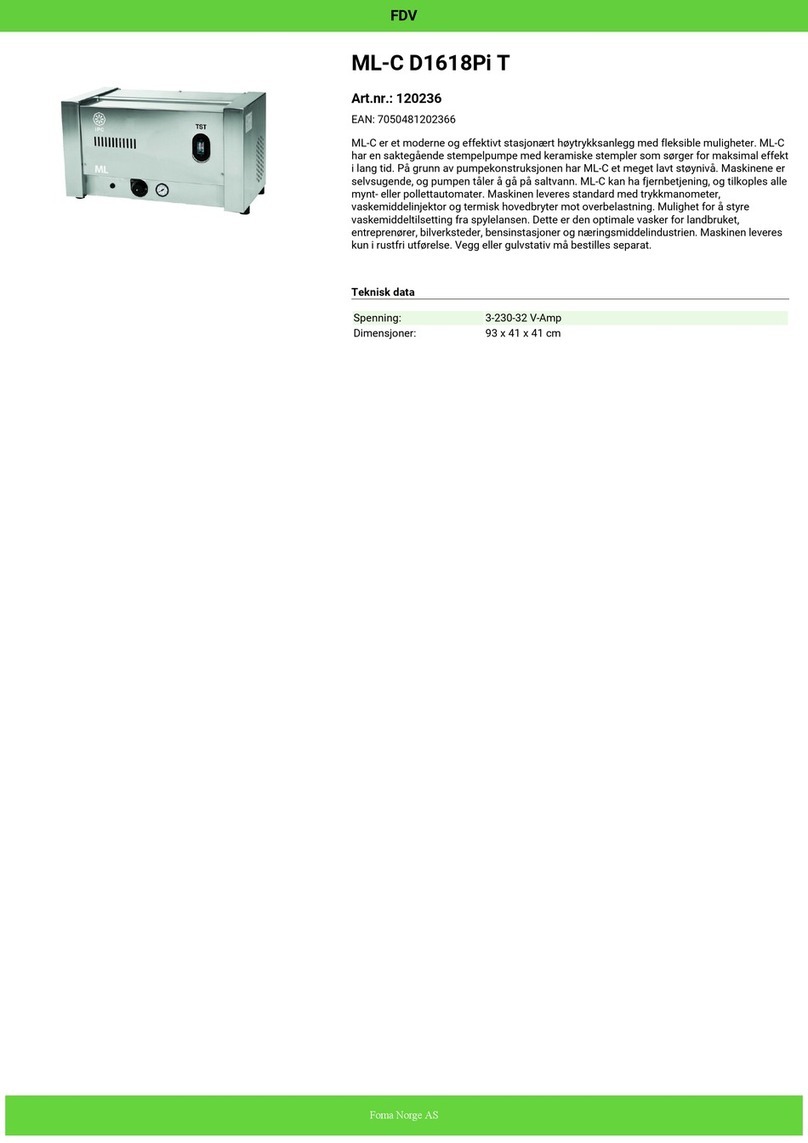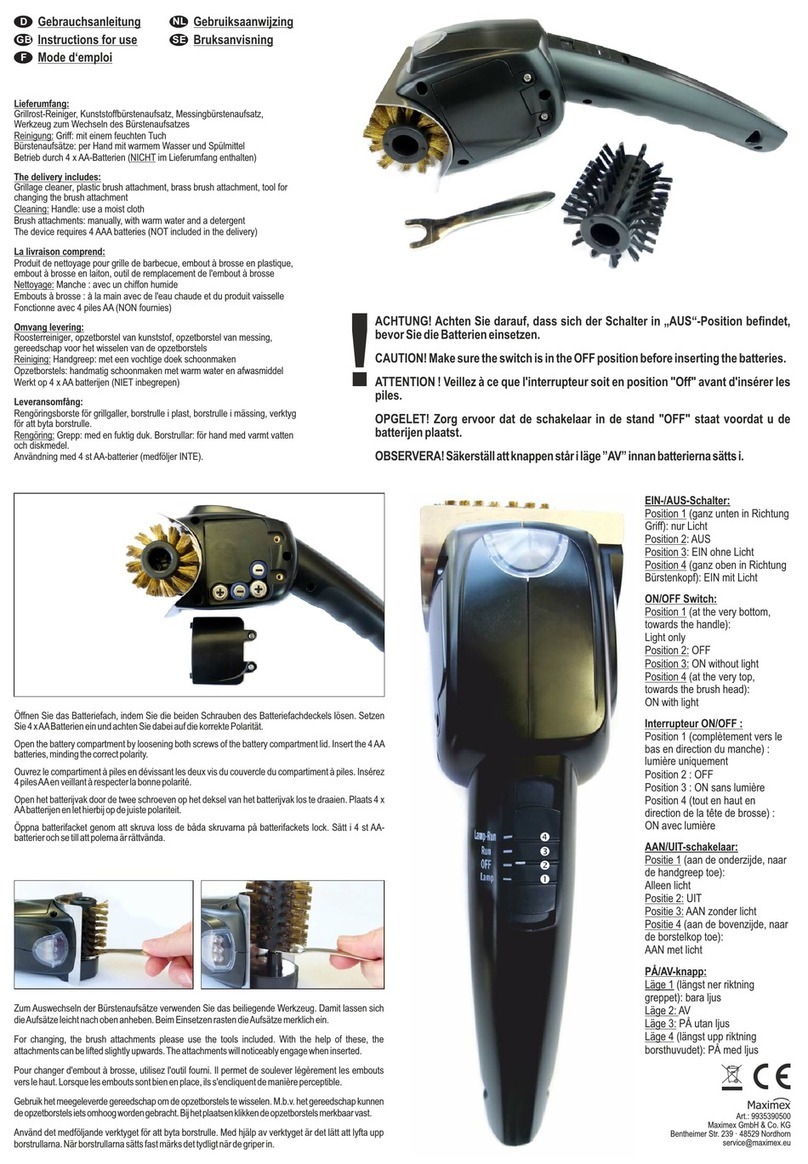
10 / 27 51396c GB/2019-04
1
electronic GmbH & Co. KG • Heinrichstraße 3-4 • 12207 Berlin • Deutschland • [email protected]1.5 Warnings and safety precautions
General
• Keep the ultrasonic bath out of the reach of children and persons who have not been
instructed in its operation by reference to these instructions.
• We will not offer a guarantee for damages to the ultrasonic bath or or to the objects
treated as a result of the use of inadequate disinfecting agents or detergents.
• Keep the surface of the ultrasonic bath and operating elements clean and dry.
• Do not expose the ultrasonic bath to corroding influences.
• Only move the ultrasonic bath when it is empty.
• Empty the ultrasonic bath only while turned off.
• Ultrasonic bath adhere to prescribed EMC limit values, such that it can be assumed
that the electromagnetic radiation emanating from the unit is harmless to humans.
However, a binding statement for wearers of implants can only be made at the place
of work and together with the implant manufacturer. In case of doubt, information
regarding the allowable electromagnetic exposure level is to be obtained from the
implant manufacturer.
Operation and transport
• Observe ambient and set-up conditions, see section 1.4.
• Only plug in the ultrasonic bath to an outlet with a grounded socket.
• Do not operate the ultrasonic bath without fluids.
• Do not immerse any parts of the body (e.g. hands, feet) or living beings (animals or
plants) into the tank; in particular, do not immerse them in the ultrasonic fluid during
ultrasound operation. Danger: Ultrasound has a cell-destroying effect.
• In the event of continuous activity within a 2 m radius, adequate hearing protection
must be used. Danger: Hearing loss possible if not wearing hearing protection
during operation – the typical ultrasound cavitation noise can be perceived as very
unpleasant.
• Do not operate the ultrasonic bath while unattended.
Damage and defects
• If damage to the ultrasonic bath is detected, do not connect the ultrasonic bath to the
mains.
• In the event of defects, disconnect the power plug immediately.
• Repairs are only to be conducted by authorised skilled personnel or by the
manufacturer.
• Defective parts may only be replaced with original parts.
